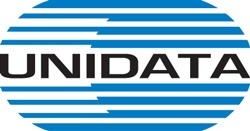Exhibitors 2023
- ART
- ARTISANS & NEW CRAFT
- FASHION & WEARABLES
- RECYCLING & UPCYCLING
- STEAM PUNK
- CIRCULAR ECONOMY
- PRODUCT DESIGN
- STARTUP
- BIOLOGY
- EDUCATION
- MUSIC & SOUND
- SCIENCE
- GAMES
- HACKS
- INTERNET OF THINGS
- OPEN SOURCE
- HOME AUTOMATION
- FABRICATION
- NEW MANUFACTURING
- ROBOTICS
- INDUSTRIAL AUTOMATION
- 3D PRINTING
- ENERGY & SUSTAINABILITY
- YOUNG MAKERS (< 18)
- WELLNESS & HEALTHCARE
- AEROSPACE
- FOOD & AGRICULTURE
- 3D SCANNING
- ARTIFICIAL INTELLIGENCE
- DRONES
- KIDS & EDUCATION
- CULTURAL HERITAGE
- RETROCOMPUTING
- VIRTUAL REALITY
- CYBERSECURITY
Chewing: sei come mangi
Chewing is a process of vital importance for our well-being and to ensure proper digestion of food. In addition to its primary function of breaking down food into smaller pieces, chewing plays a crucial role in promoting optimal assimilation of nutrients and promoting the overall health of our digestive system. From the beginning of the digestive process, chewing plays a significant role in preparing food for the subsequent action of digestive enzymes present in the gastrointestinal tract. By properly chewing food, we break it down into smaller particles, allowing digestive enzymes to act more efficiently on them. Furthermore, chewing favors the interaction of food with saliva, which contains enzymes capable of starting the decomposition of carbohydrates. This process facilitates the digestion and absorption of nutrients as they pass through the digestive system.
Slow and thorough chewing allows our brain to receive satiety signals in a timely manner, thus reducing the risk of overeating. This is particularly important for those who wish to manage their body weight or adopt healthier eating habits.
Several factors can influence the functionality of chewing. For example, some conditions such as temporomandibular dysfunction (TMD) or dental malocclusions can impair the ability to chew properly. Additionally, habits such as smoking can have a negative impact on oral health and masticatory function.
In the scientific literature, several techniques have been described that use electromyography (EMG) technology to analyze mastication. However, these techniques are mainly aimed at detecting the presence of the masticatory act or at classifying foods based on the electrical signals generated during chewing. To date, there is no electromyographic device that is able to provide a complete assessment of an individual's chewing performance, in order to define a personalized chewing profile that allows the user to become aware of their chewing habits and, possibly, make of the changes.
In this context, "Chewing" is presented, an innovative device that represents a solution for evaluating chewing style in a non-invasive way. Chewing analyzes chewing considering different aspects of the process, such as the time dedicated to chewing, the number of chews performed, the energy used, the time of a chewing cycle and the pace of work. Thanks to this detailed analysis, it is possible to evaluate the chewing process itself, taking various aspects into consideration, and to define chewing profiles.
Alessia Riente*, Giada Bianchetti, Alessio Abeltino, Cassandra Serantoni, Giuseppe Maulucci, Marco De Spirito
Alessia Riente is a PhD student candidate in neuroscience at the university of Cattolica del Sacro Cuore. She has scientific interest in wearable device in medical field and in developing machine learning algorithms.




















































































